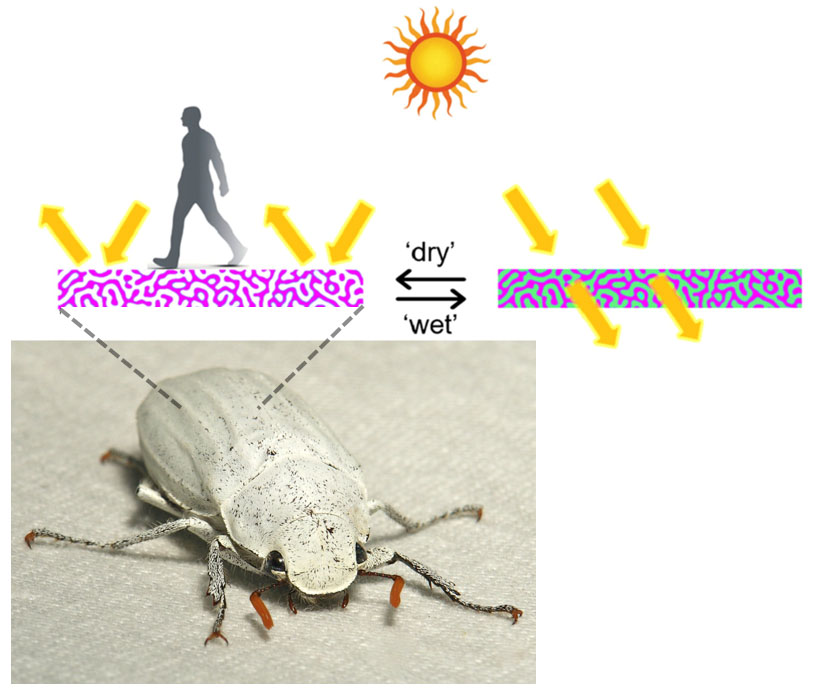Passive daytime radiative cooling (PDRC) coatings provide an eco-friendly and cost-effective alternative to cool surfaces and structures. Ideally, these coatings would have excellent cooling performance in thin, mechanically robust layers that could switch from rejecting heat to accepting heat during periods of low sunlight and would be produced by low-cost and scalable methods.
Inspired by the structure of the Cyphochilus beetle, Stebe and Lee have developed a novel PDRC structure templated by bicontinuous, interfacially jammed emulsion gels (bijels) that possesses excellent cooling, thinness, tuneability, scalability, and mechanical robustness. These structures can be switched between two distinct states. They are bright white and extremely effective at radiating incident light back to space in the dry state, enabling cooling during warm seasons. However, when infused with a liquid, they become transparent, allowing incident light to penetrate and thus heat a structure during colder seasons.
The ability to switch between reflecting and transmitting solar radiation, along with their scalable fabrication and excellent cooling performance, makes these bijel PDRC coatings a promising alternative to traditional air conditioning, especially in underdeveloped regions with limited access to power infrastructure.
T. Wang, ACS Appl. Mater. Interfaces 2023, 15, 41, 48716–48724 https://doi.org/10.1021/acsami.3c11338

